Realme X3 SuperZoom Review — An Actual Flagship Killer
Flagship smartphones are getting more and more expensive. In 2014, $750 would have gotten you the best-of-the-best flagship of that generation. Now, you’re looking at almost twice that price for the absolute best. It’s increasingly becoming more difficult to justify a $1,000+ purchase for a base variant unless you really need all the features a premium flagship has to offer (and since it’s the base variant, you aren’t really getting them). Luckily, premium flagships aren’t the only phones that exist. There’s a thriving mid-range device market, where you pay anything from $300 to $700 and get a less fancy, but still good, product. We’re here to talk about one such mid-range-arguably-flagship smartphone: the Realme X3 SuperZoom. Retailing at €500 for the top variant, the Realme X3 SuperZoom seems like a pretty great deal for a new smartphone on the surface.
Price isn’t everything, though. How well does the Realme X3 SuperZoom perform? Is the battery life good? How about the cameras? Here’s my review of Realme’s 2020 flagship killer.
Realme X3 SuperZoom: Specifications
| Specifications | Realme X3/X3 SuperZoom |
|---|---|
| Dimensions & Weight |
|
| Display |
|
| SoC |
|
| RAM & Storage |
|
| Storage Type | UFS 3.0 + Turbo Write + Host Performance Booster (HPB) |
| Battery |
|
| Fingerprint Sensor | Side-mounted fingerprint |
| Rear Cameras |
|
| Front Cameras |
|
| Android Version | Realme UI based on Android 10 |
About this review: Realme sent us the Realme X3 SuperZoom for this review. This review is after about one month of use. Realme did not have any inputs on this review.
First Impressions
Unboxing
First up, the Realme X3 SuperZoom comes in a fairly normal-looking box, except for the fact that it’s bright yellow. Inside, we’ve got the usual components: a charging brick, a USB Type-C cable, a SIM tool, a clear soft-plastic case, and some documents. There are no included 3.5mm earbuds here, though; the Realme X3 SuperZoom does not have a headphone jack.
Appearance
Anyway, onto the phone itself. The Realme X3 SuperZoom comes in two color variants: Arctic White and Glacier Blue. I was lucky (sort of) enough to see both colors in person, and they’re both gorgeous. Realme initially sent me the white variant for review, but I swapped it for the blue model because of various hardware issues with the first unit I was sent. The white color isn’t your typical boring plain-white slab. It’s a semi-matte finish, which means it simultaneously avoids attracting fingerprints and has those cool rainbow refraction effects. It’s quite a striking finish, and I’d love to see it on more phones.
The glacier blue, disappointingly, is a full-glossy finish. While that means it’s more of a fingerprint magnet, it doesn’t mean it looks worse. Just like the white variant, the blue finish has some cool refraction effects, although they’re mostly limited to various shades of blue. It’s still a great look, but my personal favorite is the white one.
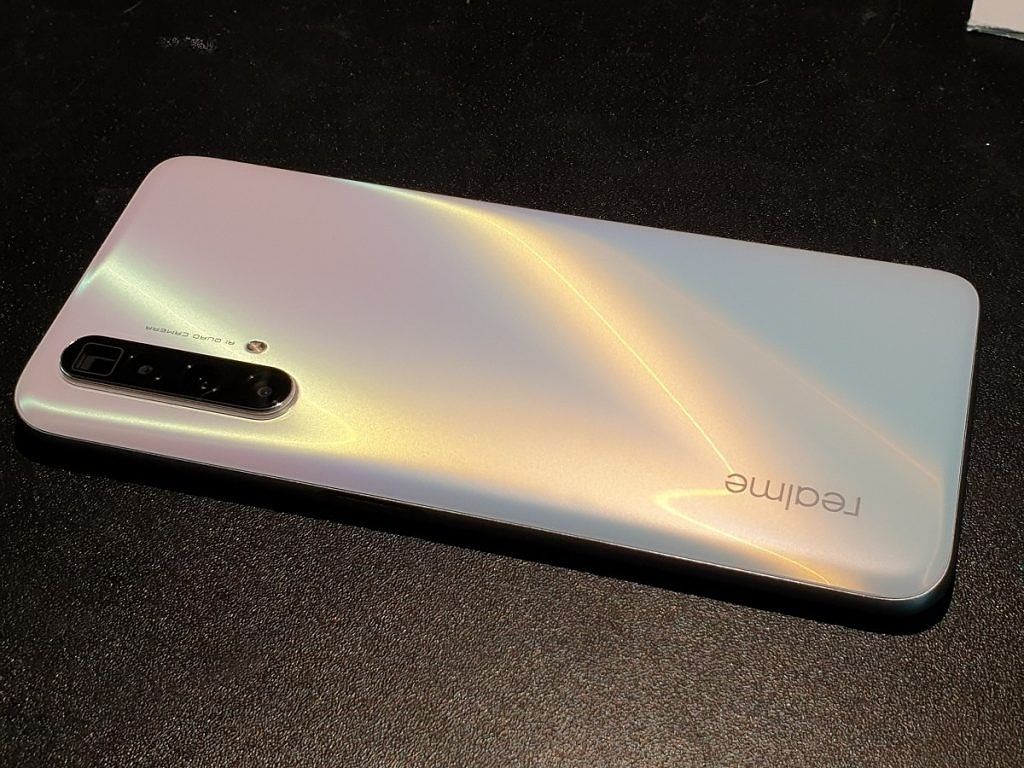





Specs
Eagle-eyed readers may have noticed that the processor on the Realme X3 SuperZoom is a Qualcomm Snapdragon 855+. This is a 2020 smartphone, so what gives with the year-old processor? Well, it’s a cost-saving measure, and a way to avoid having to add costly 5G components. The Snapdragon 855+ is no slouch, though, and this is a phone packing 12GB of LPDDR4X RAM and 256GB of UFS 3.0 storage for €500, so I think it gets a pass. I can honestly say the older processor doesn’t affect my daily usage whatsoever.
You may have also noticed that the display is LCD and not OLED. This means that there’s no under-display fingerprint scanner. Instead, it’s embedded in the power button on the side, just like on the Galaxy S10e. Personally, I don’t have a strong opinion on either position, but it is a departure from the current norm of packing in-display scanners even in cheaper mid-range smartphones. Back to the screen, I didn’t even notice it was LCD at first. I’ll go into more detail later, but basically, I think the screen looks pretty good.
Haptics
I also want to take a moment to mention the haptics on the Realme X3 SuperZoom. Unlike the other OPPO smartphones I’ve used, the haptic feedback on this phone is amazing. Vibrations are sharp, with no spin-up or spin-down.
In-the-Hand Feel
The Realme X3 SuperZoom isn’t exactly a light phone (it’s slightly heavier than the Samsung Galaxy Note10+), but I don’t really mind that as it’s still pretty comfortable to hold. Thanks to the rounded edges and the fairly narrow profile, one-handed use poses no problems for me.
Overall, the Realme X3 SuperZoom leaves a good first impression. It feels like a solid smartphone, and the price you pay for it means you won’t feel cheated.
Software
The Realme X3 SuperZoom comes with Realme UI 1.0 based on Android 10. Don’t be fooled by the name, though. Realme UI is still just a lightly modified ColorOS, with most of the same annoyances and compromises. A while back, Realme had said that their aptly-named Realme UI would be close to AOSP. Flash-forward to now and that’s definitely not the case. I’ve even dug through the ColorOS system code. It seems that “Realme UI” is just ColorOS with different options enabled. All the features and changes present in Realme UI are also present in ColorOS but just disabled.
Here are a couple of examples of what Realme has changed. The most obvious one is the shape of the Quick Settings tiles. Instead of the small squares on ColorOS 7, Realme UI’s are rounded. The other one, which is definitely appreciated, is the ability to dismiss notifications by swiping in either direction. On ColorOS 7, you can select a left or right swipe to dismiss notifications, but not both.
While it’s nice that Realme is trying to make its phones feel at least a little different from OPPO’s, it’s disappointing that we didn’t get the promised near-AOSP software. Maybe it’ll happen next year.
Onto the actual software, well, it’s ColorOS. There’s your regional bloatware, like Opera and Yandex (if you’re in Russia). Since I was sent the Filipino variant, there’s an ORoaming app pre-installed for buying roaming plans when you’re outside of the Philippines.
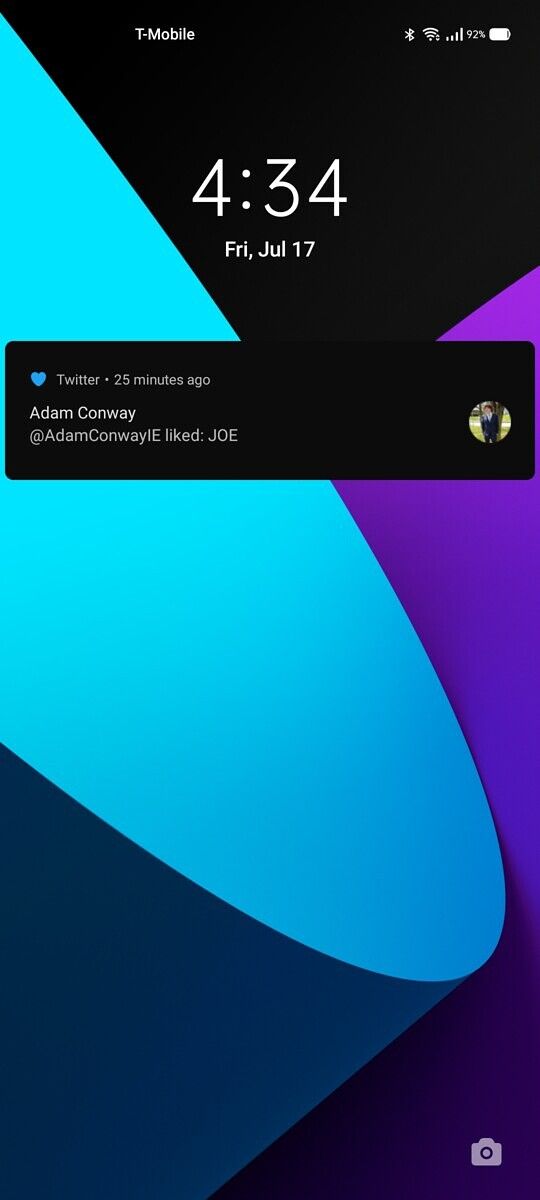

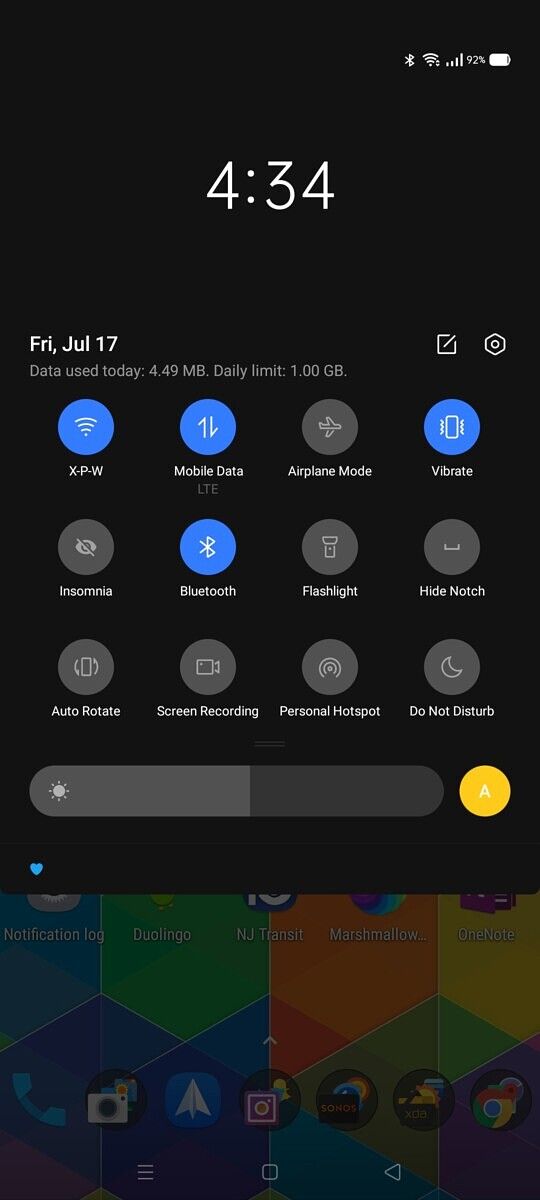

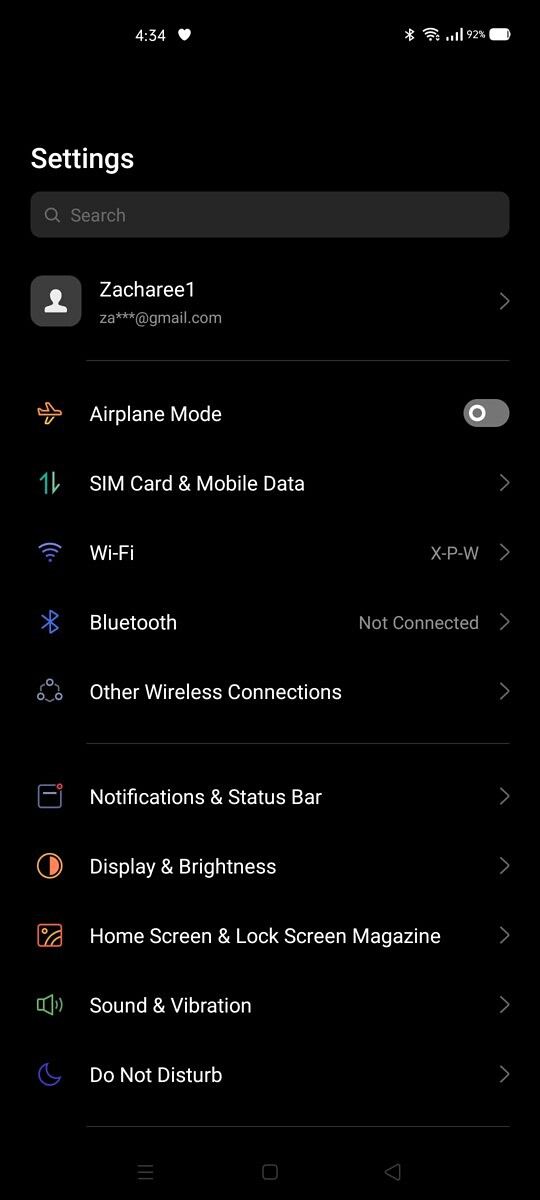


There’s also this annoying app scanner feature that pops up every time you try to install an app. It doesn’t matter if it’s a debug app or a cloud restore through Google Play. Every single time an app gets installed, this scanner pops up. There’s no built-in way to disable it, either. I spent about 30 minutes looking through Settings before I finally resorted to the disable-user trick to get rid of it. As an app developer, this sort of scanner is incredibly annoying. Huawei does it too on EMUI 9 and 10, and so does Xiaomi, and it results in so much wasted time. For a brand that’s trying to market itself as developer-friendly, this really isn’t very developer-friendly.
If you’re considering buying the Realme X3 SuperZoom, you should be aware that there’s no Always On Display or Ambient Display. Since the display hardware is LCD, the lack of an AOD makes sense. I wish they would have included at least an Ambient Display mode, though.
On the whole, Realme UI has the same features, some of which are great, as well as the same frustrating platform changes as ColorOS. While some things are improved from versus the OPPO ColorOS variant, such as the ability to dismiss notifications in either direction, other things are worse, like the app scanner.
Performance & Battery Life
Performance
While the Realme X3 SuperZoom may come with last year’s flagship processor, that doesn’t mean it’s slow by any means. The Qualcomm Snapdragon 855+ is still much more powerful than current mid-range processors like the Snapdragon 765G. The only disadvantages compared to the 765 are (very) slightly worse battery life and a lack of native 5G support. Likewise, the disadvantages compared to the 865 include a lack of native 5G and a slightly weaker CPU and GPU. But for most people, those aren’t really an issue. I think Realme made the right decision here.
In daily usage, performance hasn’t been a problem. Apps open quickly and multitasking is a breeze (thanks, in part, to the huge 12GB of RAM capacity). Animations are almost always smooth, and interactions are almost always instant. Scrolling is also fluid thanks to the phone’s 120Hz display refresh rate. The only time I think I’ve seen the Realme X3 SuperZoom stutter is in Chrome, which occasionally freezes.
We’ve benchmarked and gamed on devices with the Snapdragon 855+, so I won’t go into significant detail here about the chipset’s performance. I did do a few benchmarks to see how the Realme X3 SuperZoom stacks up against the Qualcomm reference devices, though.
First up, in Geekbench 5.0, the overall single-core score of 768 was barely higher than the average overall single-core score of 760 from our Snapdragon 855+ test device (the ASUS ROG Phone II). The Realme X3 SuperZoom’s Geekbench 5.0 multi-core score of 2677 is 183 points below the ASUS ROG Phone II’s average multi-core score of 2840, though. The difference in single-core scores is too small to be worth a consideration, but a breakdown of the multi-core subscores shows that top-tier Snapdragon 855+ devices are faster at integer and floating point calculations.
Next, in AnTuTu, the Realme X3 SuperZoom handily outperformed our comparison Snapdragon 855+ device. With an overall score of 475,816, the Realme X3 SuperZoom outperformed the ROG Phone II by nearly 50k points (which had an overall average score of 425963 across 3 tests). The biggest gains were in CPU, memory, and UX scores, though the GPU score of the ROG Phone II was superior. We can’t discount some of these gains to the difference of Android versions (the ROG Phone II was running Android 9 Pie when these numbers were taken while the Realme X3 SuperZoom is running Android 10). Ultimately, the AnTuTu score doesn’t really mean much for day-to-day performance, though it does show how devices with the same processors can still differ in performance in some areas like memory access speeds, image processing, and data processing.
Lastly, in PCMark’s Work 2.0 test, the Realme X3 SuperZoom scored an overall 11,709 points for performance. PCMark is a great test at quantifying real-world performance thanks to its suite of web browsing, video editing, document editing, photo editing, and data manipulation tests. The Realme’s score in this test outperformed both the ASUS ROG Phone II and the Google Pixel 4, though the latter device is powered by the standard Snapdragon 855 rather than the 855+. A comparison of the subscores reveals that the Realme X3 SuperZoom excelled at the web browsing, writing 2.0, and photo editing 2.0 tests, which spells good news for the phone’s performance in tasks you’re likely to do each day on your phone.
Again, benchmarks aren’t the end-all-be-all of performance. Most flagship (and near-flagship) smartphones these days have the best SoC, RAM, and storage combinations you can get. Sure, how OEMs tweak kernel parameters, what file systems they use, what other optimizations they add, and what they don’t change can all make a difference in performance. It’s why Google and OnePlus are consistently praised for the performance of their devices. Realme hasn’t done anything to wreck the performance of the X3 SuperZoom – it performs exactly how a phone with the Snapdragon 855+, 12GB of LPDDR4X RAM, 256GB of UFS 3 storage, and a 120Hz LCD panel should perform.



Battery Life
Now let’s talk about battery life. At the beginning of this section, I mentioned that the Snapdragon 855+ sacrifices some battery life for better performance versus the 765G. And that’s true, but it’s not much. The Realme X3 SuperZoom’s standby time is great. I can leave it sitting overnight and it’ll drain at most 5% after maybe 12 hours. I’ve averaged around 6 hours of screen-on-time with the phone, though since I can’t properly use the phone on T-Mobile, I can’t confirm how well the battery life fares on a mobile data connection. Screen-on usage at 60Hz is a similar story. After 2+ hours in bright sunlight, browsing Reddit, or using Discord, the battery will drain maybe 10%. Couple that with the insanely fast charging and I find this to be a winning combination.
Camera
Like most phones from 2019 and early 2020, the Realme X3 SuperZoom has a lot of cameras. There are four cameras on the back and two on the front. One of the main selling points of the Realme X3 SuperZoom is the telephoto camera, as can be guessed from the name. We’ll talk about that specifically in a bit, but first, here’s a general breakdown of camera quality.
Rear Cameras
For a €500 phone, the cameras are pretty impressive. Photos retain their detail after being shot (which is something OPPO, and by extension, Realme, hasn’t generally been good at). White balance and exposure are both excellent in full-auto mode. Pictures are also taken plenty quickly. You won’t be waiting half a second for the phone to respond.
Telephoto & “SuperZoom”
The main feature of the Realme X3 SuperZoom, though, is the telephoto lens (it’s right in the name). Realme says this camera can zoom up to 60X, with a native optical zoom of 5X. The camera viewfinder itself has shortcuts for 2X, 5X, and 10X, with up to 60X being available with the classic pinch-zoom gesture. In my testing, photos taken at 2X and 5X zoom levels are pretty great with excellent detail retention, color reproduction, and exposure. Even 10X zoom level photos turn out decently enough in the same metrics for simpler shots. I’ve used 10X to zoom in on a far away sign I couldn’t read before. As for anything above 10X, well, the quality starts to drop off considerably. Zooming past 10X also results in incredibly difficult-to-take shots, since even a vibration from a single notification can jostle the viewfinder.









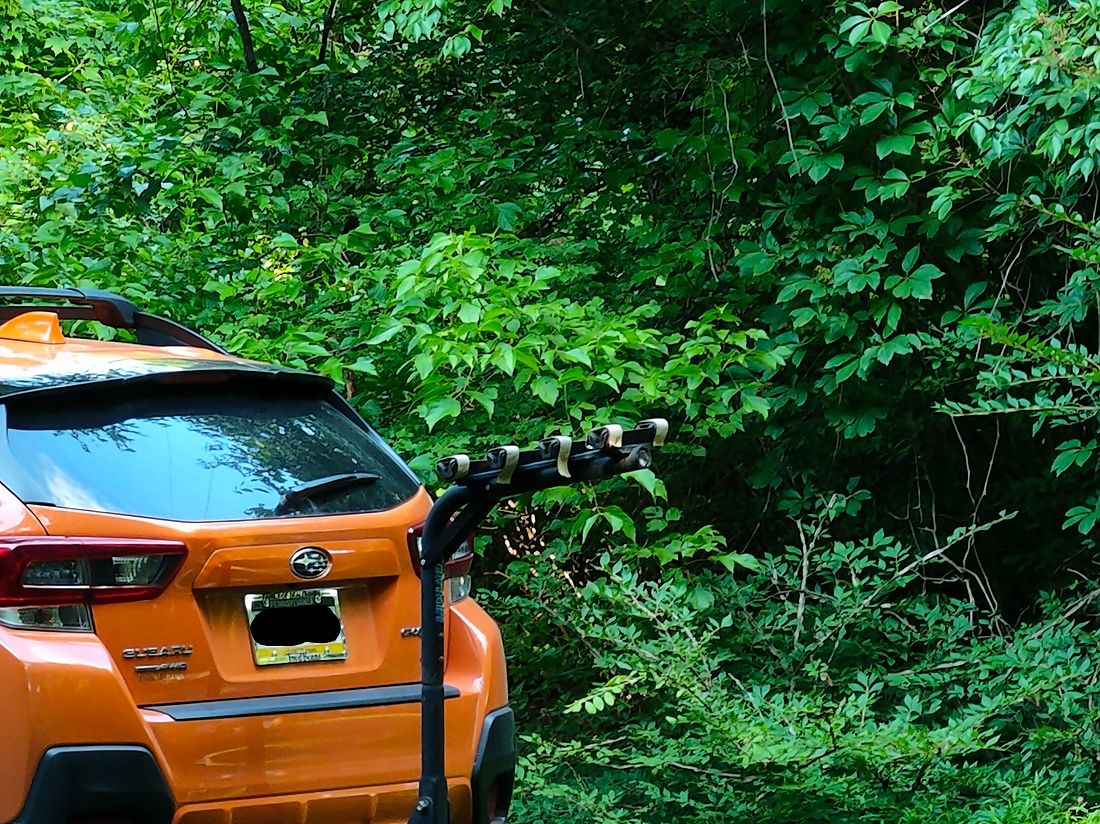
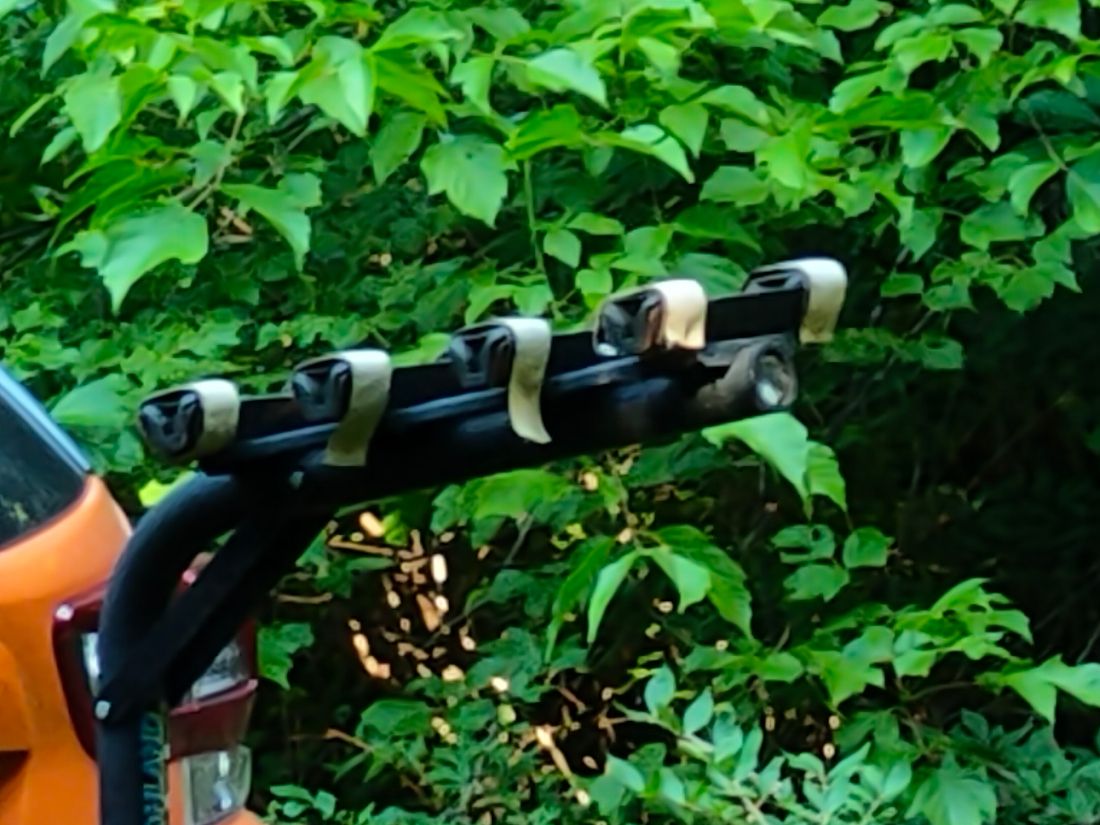

Samples
Here are some samples taken by the rear cameras, including some zoomed photos.





















Pro Photos
If auto mode isn’t your thing, Realme has provided a fully-featured Pro photo mode to the camera, where you can adjust things like focus and exposure to your heart’s content. There’s currently no Pro video mode, though.

Night Mode
There is also a night mode option on the Realme X3 SuperZoom. Actually, there are two. Scrolling to the Night tab will put you in either normal Nightscape or Ultra Nightscape, depending on how much light there is. In both modes, it can be a little difficult to get the camera to focus, even in relatively abundant light. Both of them also take a couple of seconds to capture, but that’s to be expected. In my testing, normal Nightscape doesn’t seem to be that much different from auto mode. The pictures from both are just about as bright, but with the Nightscape one being more blurry. Ultra Nightscape is where the difference really shows. This mode manages to brighten up images that look almost completely black in auto mode. Of course, it’s also pretty blurry, but that’s more excusable here.




Video
In terms of video, Realme has carried over its Ultra Steady video mode with some improvements. Compared to the OPPO Reno2 running ColorOS 6, the Realme X3 SuperZoom’s Ultra Steady mode is much better. Where the Reno2’s video was washed out and overexposed, the Realme X3 SuperZoom’s video has much better color and exposure.
On top of that, the stabilization is still incredible. Intentionally shaking the phone barely causes a wobble on-screen. It genuinely looks almost like you have the phone on a gimbal. As a plus, Ultra Steady’s FoV on the Realme X3 SuperZoom is equivalent to what you see in a normal 1X-zoom video, which is a nice attention to detail.
There’s also a new addition to Ultra Steady mode: Ultra Steady Max. This applies even more stabilization to the video and is most useful for slow-moving shots. You don’t want to use this for anything up-close and fast-moving, though, since the processing will cause everything to look blurry. Interestingly, it’s more zoomed out compared to the normal Ultra Steady video, which I found interesting.
Front Cameras

Rear cameras aren’t everything, though. The Realme X3 SuperZoom has two front-facing cameras in hole-punch cutouts. One is your standard everyday 32MP sensor, and the other is a wide-angle lens. In case it wasn’t obvious, I don’t really take selfies, so I can’t really speak too much about how good these cameras are. They look fine to me, though, and I’m sure they are.



Display
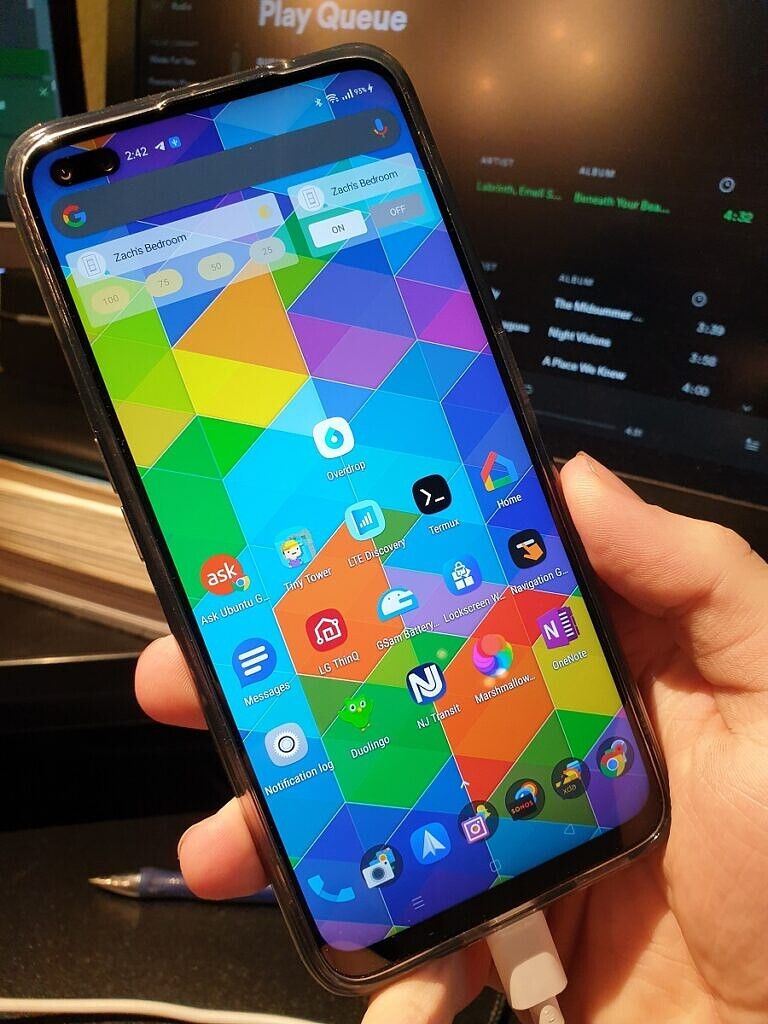
As I’ve mentioned a couple of times, the display on the Realme X3 SuperZoom is an IPS LCD, which means Realme couldn’t implement features like an in-display fingerprint reader or an AOD. That doesn’t detract from the actual display itself, though.
Of course, there’s your standard 2020-grade dual hole-punch cutout. This phone doesn’t have water resistance, so I’m a little disappointed Realme didn’t opt for the pop-up camera design. I really liked that feature on the OPPO Reno2, and I’m sad it didn’t stick around.
The colors on this screen look good. I’m not any sort of display enthusiast, so I can’t really talk about it quantitatively. But colors seem both accurate and vibrant, and the display gets plenty bright. This shouldn’t be your phone of choice if you’re always in direct sunlight, but the display is easy enough to read outdoors on a sunny day and gets dim enough at night to not blind you. Unfortunately, auto-brightness isn’t great, but that’s a software issue and one that’s been part of OPPO phones for a while now.
For the most part, it’s easy to forget that the Realme X3 SuperZoom doesn’t come with an OLED display. The only time you can really see the difference is in the viewing angles. Looking at the display at an angle, the screen gets a bit of a white tint to it. It’s not deal-breaking by any means, but it is annoying and not something I remember from other LCDs.
Finally, the refresh rate. The Realme X3 SuperZoom comes with a 120Hz display. The auto-refresh rate switching in Realme UI prefers to keep the phone at 60Hz, but you can tell it to prioritize 120Hz if you want. Personally, I don’t see too much of a difference between 60Hz and 120Hz. Sure, it’s a little smoother, but I just don’t see the big appeal. I don’t think this is the fault of the phone, either. My laptop’s display goes up to 144Hz, and the only significant thing I get from that is a headache. For €500, though, it’s hard to complain about getting a higher than normal refresh rate.
Overall, the Realme X3 SuperZoom has a good display. It gets bright enough, the colors look good, and it’s got the fancy 120Hz high refresh rate. Unless you’re religiously against using LCDs in phones, this display is more than fine.
Other Aspects
A phone isn’t just a camera or display, though. There’s a whole bunch of other hardware that goes into it. Let’s talk about some of the more important components.
Fingerprint Reader
First up, Realme X3 SuperZoom’s fingerprint reader. Like I’ve mentioned before, it’s positioned on the power button, instead of 2020’s standard of in-display readers. This is a good fingerprint reader. It’s incredibly fast while also retaining accuracy. Training it is a breeze, and all it needs is a quick, light tap to unlock. The position of the power button itself also takes into account how you might use the scanner. It’s a little lower than you might normally expect on a phone, but it’s the perfect height to easily reach with your thumb. The scanner is so good, it’s honestly a little annoying sometimes. It’s really easy to accidentally unlock the phone when putting it back in my pocket. I’ve even unlocked it just by putting my hand in my pocket and accidentally brushing it. I’d definitely appreciate better pocket detection, but I’ve already complained enough about Realme’s software.

Haptics
Next, the haptics on the Realme X3 SuperZoom. I talked a bit about this in the first impressions section, and I’m going to talk about it a bit more here. They’re good. Better than good, in fact: they’re great. I might be biased from comparing the phone to the mid-range OPPO Reno Z, Reno2, and Reno3 Pro (Indian variant), but the Realme X3 SuperZoom’s haptics are lightyears ahead of previous OPPO mid-rangers I’ve used. Feedback is short and to the point, with no revving like you get in cheaper haptic systems. Want a 20-millisecond vibration? No problem. You’ll get and feel exactly that. Realme has even gone so far as making things like pressing the navigation keys feel like actual button presses. But again, it’s Realme software, so it’s not really consistent. The hardware is what I’m praising here. It’s really nice to see good haptics in a non-flagship smartphone.
Sound
Now it’s time to talk about the sound. There’s not much to say here. In terms of speakers, the Realme X3 SuperZoom has a single bottom-firing speaker. It gets loud, but it doesn’t sound particularly good, and higher volumes tend to produce a rattling noise. There’s also no headphone jack, disappointingly.
Network Coverage
Normally, I’d like to talk about coverage here, but this is yet another phone that doesn’t support LTE band 12. I’m in the U.S. on T-Mobile, so having band 12 support in a phone is pretty important. I’ve already talked about dealing with the lack of support in previous reviews, so I’m not really going to go into it here. Just be aware that this isn’t really a phone you’ll want to use in the U.S. But since Realme is not targeting the US market with the phone, this isn’t an issue for the target audience.
Charging
Finally, the charging speed. Realme calls its fast charging technology Dart Charge. Dart Charge is the same technology behind OnePlus’ Dash/Warp Charge, as OPPO’s VOOC, and as Vivo’s FlashCharge. If you’ve seen reviews of other BBK smartphones, you probably already know what I’m going to say here. Dart Charge is fast. The Realme X3 SuperZoom has a 4200mAh battery, and the 30W Dart Charge takes no time to charge from nearly flat to 100%. The phone already lasts pretty well on battery, so the fast charging is mostly just a bonus.

Development on the Realme X3 SuperZoom
Before this review is over, I want to talk a bit about using the Realme X3 SuperZoom as a development device. I’m an app developer—and I have played around with AOSP development and ROM modding—so a device that works well with my process is pretty important. How good of a development device is the Realme X3 SuperZoom? Well, it’s complicated.
Bootloader Unlocking and Root
Unlike its sister brand OPPO, Realme allows bootloader unlocking for specific models. Unfortunately, it doesn’t look like the Realme X3 SuperZoom lineup is included right now, which means I can’t root my unit. Since the apps I make are pretty low-level (SystemUI Tuner, Lockscreen Widgets, etc) and usually need weird permissions, having a rooted device is a great way to speed up development and testing. Since I can’t root the Realme X3 SuperZoom, it’s not as useful for development as I’d like it to be. It’s nice that Realme is sort of allowing bootloader unlocking, but having to wait on someone at the company to decide that a specific model deserves root is annoying.
App “Security”
Then there’s the app scanner. I talked about this a bit earlier. I get why something like this might be included. There is a lot of malware out there, and it’s good to try to keep your users safe. But when your malware blocker acts like malware (specifically as nagware) itself, it kind of defeats the purpose. A normal malware scanner, like Google Play Protect, only pops up if it finds something wrong. Realme’s, on the other hand, appears any time you install an app, from any source. Sideloading an APK? Get ready to dismiss an extra popup. Restoring your apps from Google Play? Have fun tapping “done” on 200+ dialogs. Obviously, having this pop up every time you install an app makes rapid-fire testing a bit of a chore.


Possibly the biggest drawback of this “feature” is that you can’t even disable it through the UI. The only way I could find to turn it off was to hunt for the package name and then use ADB. If Realme wants to be a developer-friendly brand, this is not the way to go about it.
API and Feature Woes
Finally, another issue: broken APIs. All devices that ship with Google Play are meant to have a standard set of APIs that are guaranteed to function identically across devices. That’s a great idea in theory, but it hasn’t worked out that way. There are countless APIs that break in small but sometimes large ways. While ColorOS/Realme UI isn’t alone in being problematic, it seems to have the most frustrations out of any version of Android I’ve personally used. Google’s certification tests are supposed to catch issues like these, but I guess you can’t test for everything.
Conclusion
Honestly, the Realme X3 SuperZoom is a pretty great phone overall. Obviously, it’s not on the level of some flagships of this year, but Realme had to make some compromises. At €500 or ₹34,999, you’re getting quite a lot of bang for your buck. There’s the 12GB of RAM coupled with the 256GB of internal storage, a good camera system with an actually-useful telephoto camera, a beefy processor, and more. In India, the phone even comes in a slightly cheaper 8GB RAM/128GB storage model for ₹29,999. The only thing truly detracting from the experience, at least for me, is ColorOS. If I could, I’d probably be using it as my daily driver.
Unfortunately, since this phone doesn’t support LTE band 12, it can’t be my main phone in the U.S. This is an unfortunate result of a compromise Realme made to keep the price low: only certifying the bands needed for the regions where the phone is sold. If you’re in the US or Canada, it’s hard to recommend buying the Realme X3 SuperZoom because of the cellular incompatibility. But if you’re living in Europe or India and in the market for an affordable not-quite flagship smartphone, the Realme X3 SuperZoom is a great option. It has a lot of what we’re seeing in current 2020 flagships, at less than half the price.
Buy the Realme X3 SuperZoom: Flipkart (India), Amazon (Spain) – Affiliate Link, Realme.com (Europe)
The post Realme X3 SuperZoom Review — An Actual Flagship Killer appeared first on xda-developers.
from xda-developers https://ift.tt/3eOYjjy
via IFTTT
 Reviewed by site
on
01:13
Rating:
Reviewed by site
on
01:13
Rating:
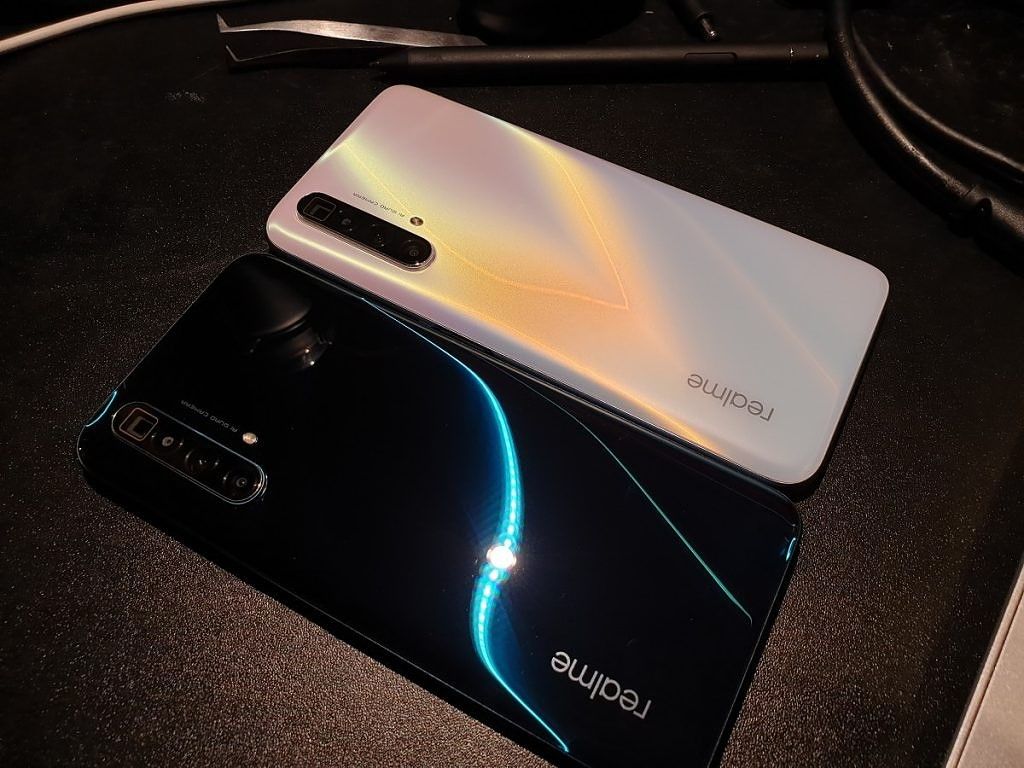
No comments: